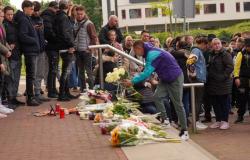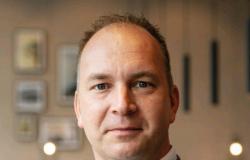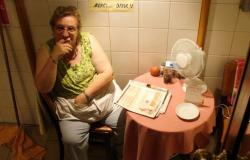Marksland was located at Abstederdijk 333 near the Minstroom and was demolished in 1934 for the construction of the Burgemeester Fockema Andreaelaan. The house did not have the typical appearance of a villa; because of its high sidewalk and simple form it has sometimes been described as a 17th-century house that would later have been plastered. Yet it appears that Marksland was built as a country estate and only at the beginning of the 19th century.
Early in 1817 an advertisement appeared in the Utrechtse Courant in which it was offered for rent ‘the very pleasant and well-located OUTSIDE PLACE Marksland in Abstede, on the Minstroom, less than ½ hour from the City of Utrecht, with six Rooms, a spacious Attic, with two Sleeping Places, as well as a Kitchen, Cellar and Loots’. It included a garden of just under one hectare in size, ‘equipped with a large number of all kinds of fruit-bearing trees’.
The name Marksland was an old designation of a region in western Germany. It is unknown why the house was called that. That it must have been built in 1816 or 1817 is evident from an advertisement four years later, when Marksland was again available for rent. It stated: ‘a newly built Huizinge from the ground up a few years ago’. It now included a much larger ‘garden laid out to the latest taste’ of approximately 10 hectares, which extended to the Notebanenlaan. The newest taste was the English landscape style with winding paths, groves and lawns.
Rural near the city
The house was considered suitable for both summer and winter residence. It had two rooms downstairs and four upstairs, ‘mostly wallpapered and with fireplaces’. The service areas consisted of a kitchen, a provision cellar and a drying attic (for laundry) with two ‘Domestique rooms’ (sleeping areas for the maids). When the land registry was introduced in 1832, the owner was druggist Hendrik van Rinkhuijzen (see top center of this map). It is unknown whether he lived on Marksland himself or rented it out.
The book gave a nice description of the area in Abstede The pleasure resort between Amstel and Grebbe, and elsewhere in the Sticht of Utrecht from 1837. ‘Everything here has a truly rural appearance; so that one would not say that one is so close to a large city. Walking here in a quiet morning or evening, one can imagine that one is passing through a more distant village’, wrote Jan Bastijaan Christemeijer. ‘Passing small farms, orchards and vegetable gardens, one soon arrives at the town of Wetter and later beyond that at the corner at Marksland. Just opposite the house of this estate is a small, slightly high bridge over the Minstroom.’ By the town of Wetter the writer probably meant a small country estate with that name, about which nothing is known. The Schoonoord country house was also located nearby.
Text continues under the photo
From 1869, the former teacher Dirk van Frankenhuijsen (1811-1895) lived in Huize Marksland. Although born in Utrecht, he had lived in Montfoort for many years as director of the Protestant Agricultural Education Center for Neglected Children. Following the example of foreign agricultural colonies, they had to work on a farm, which would be beneficial. The institution eventually collapsed, but Van Frankenhuijsen had done well with real estate and was thus able to pay for Marksland. After ten years he moved to Oosterstraat.
Marksland nursery
In 1879 the message appeared: ‘The Widow Rietveld, florist in Utrecht, has transferred her floristry from the Kerksteeg, there, to Marksland’. The house with its large garden was ideally suited as a nursery. Johanna Rietveld-Muller was assisted and succeeded by her son Anthonie Rietveld (1853-1897). It was said of his plants ‘for which he lived and which were grown with care and love. His pet child was the Viburnum macrocephalum [Sneeuwbal], of which there is a collection at Marksland that is rarely found.’ This is what the trade magazine Floralia wrote upon his death at the age of 43 in 1897. ‘Numerous florists stood around the quarry and scattered flowers on his grave.’
There seemed to be a curse on the Marksland nursery, because in 1900 it was stated Utrechtsch Dagblad: ‘Mr. Risseeuw, a young, skilled florist, who had operated the famous Marksland for a few years in Utrecht, died at a young age in Utrecht, and in that short time he made himself known as a skilled horticulturist and landscape gardener.’ Cornelis Risseeuw (1874-1900) was succeeded by Lodewijk Hendrik Weijer (1877-1948), who specialized in orchids and had a greenhouse for that purpose.
Text continues under the photo
After Marksland was empty for several years, the municipality bought it in 1934. Not to preserve, but to demolish as part of the Kromme Rijn expansion plan. The Burgemeester Fockema Andreaelaan was constructed for that district, which starts at the Abstederdijk on the Minstroom, exactly where Marksland once stood. ‘Fortunately we cannot call the disappearance a loss. On the contrary, the dilapidated, ugly house disfigured the area a little, while the street youth kept themselves busy destroying windows, so that Marksland was transformed into an inhospitable place,” it wrote. Utrechtsch Nieuwsblad. Part of the garden remained in use as ‘Bosch van Marksland’ for activities of the Abstede neighborhood association. Nowadays, the names Marksbrug and Markstraat (with one s) still remind us of the country estate.
Tags: Huize Marksland Abstederdijk
-






